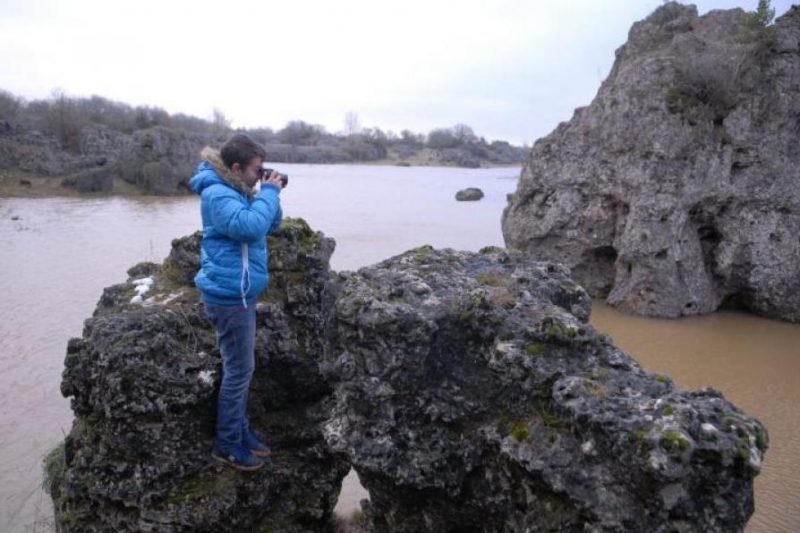Now you see it… now you do again. Down in the Hérault department, people have been out photographing the Lac des Aygas while it was still there
Since 1963, a lake in the South of France near the town of has disappeared and reformed no fewer than seven times. It was back yesterday and people were out taking pictures of it before it goes again. It’s impossible to tell when it will disappear next.
It’s been 10 years since the lake was last seen and lots of people hurried out of doors yesterday in very low temperatures to witness its dramatic return. The largest temporary lake in Europe is up to 15 metres deep in parts and situated near the village of Les Rives; about 30km north of Agde in the Hérault department in a rural area on the Larzac Plateau.
With the biblical quantities of rain that fell on the region over the last month or so, many geologists had been expecting the reappearance of the Lac des Aygas, which covers several hectares in a stunning setting of rock formations that lend a bit of Cambodia to the southern Massif Central.
“It’s a bit of a shock all over again every time we rediscover it. It’s really impressive. Because of its rarity as well as the mystery that surrounds its apparition,” says Katia Thiers, who has come here with her family for the fourth time since 1987.
“You never know how long it’s going to last. That depends on the rain. In the 1990s, it lasted for practically two years. During the summer, they put up signs forbidding swimming,” adds Jean-Pierr Argussol, mayor of the village of Les Rives which has a population of 400.
The geological phenomenon is exceptional and not completely explicable. Since 1963, it has happened seven times.
“It’s a lake of accumulation of natural drainage waters. We have established that you need about one third of the annual rainfall on the Larzac area in a 24-hour period in order for the lake to appear. So, at least 250mm of rain in one day. Then, the waters accumulate in this natural basin that was carved out by one of the riviers of the Larzac five million years ago… the sub-soil is almost non-porous and so it retains the water… The lake has no relation with the underground network,” explains Professor Henri Salvayre, author of the Monde Souterrain du Pays des Grands Causses.
Where Exactly?




 Tootlafrance is Ireland’s fresh new eyes on France, bringing you the latest news, exclusive celebrity interviews, political analysis, cultural events, property news and, of course, travel features written by top Irish journalists.
Tootlafrance is Ireland’s fresh new eyes on France, bringing you the latest news, exclusive celebrity interviews, political analysis, cultural events, property news and, of course, travel features written by top Irish journalists.